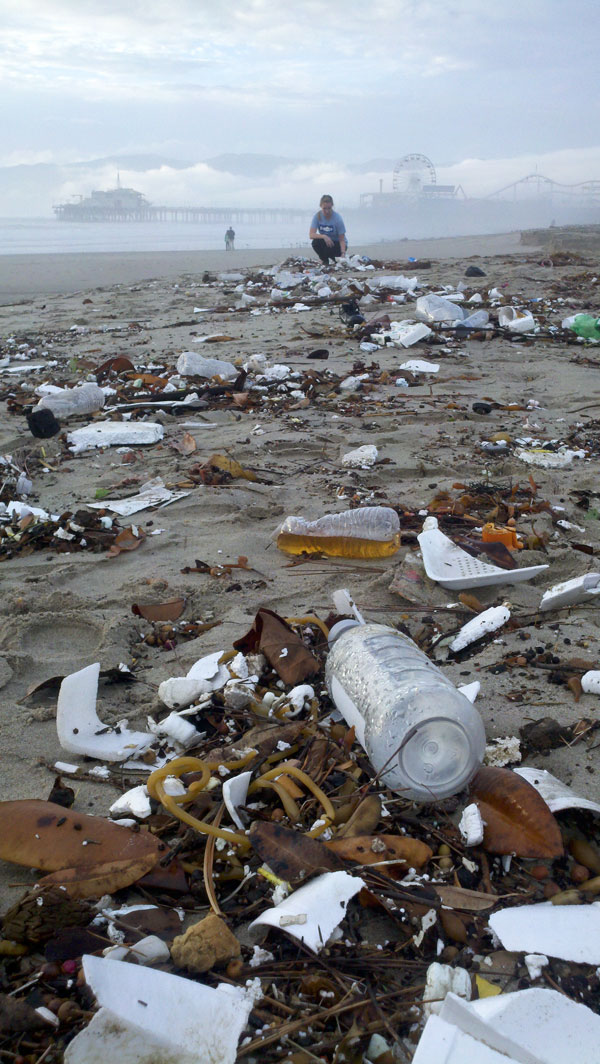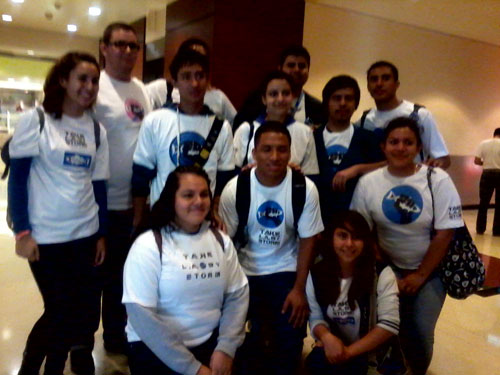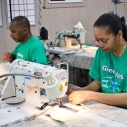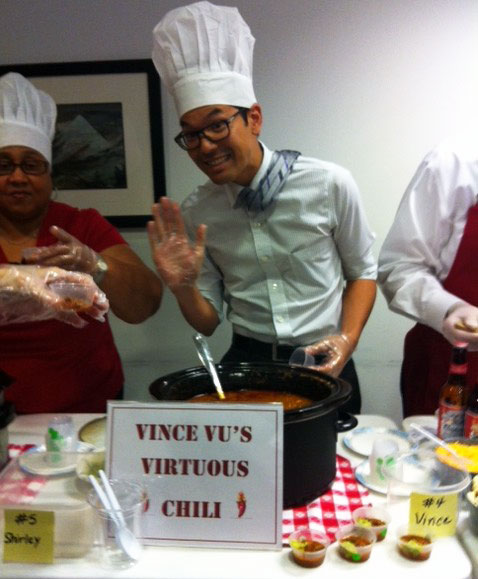We’re heading home from the L.A. Regional Water Quality Control Board hearing in Simi Valley. Songs on the radio give constant reminders of the imminent impacts to the Santa Clara River. Duran Duran’s Rio comes on, and Midnight Oil’s Beds Are Burning lyrics play from the radio and take on a new meaning:
Out where the river broke
The bloodwood and the desert oak
Holden wrecks and boiling diesels
Steam in forty five degrees…
It’s close to 4 p.m. and we drive past brownish gray plumes rising from a flaming hillside. The east side of the 405 freeway is on fire. This is yet another sign that it’s not a good day.
Earlier that day, the Regional Board certified a water quality permit for a development project that would impact thousands of acres of land to house 60,000 people in and around six miles of one of the last free-flowing natural rivers in California. The Santa Clara River is a valuable natural resource that flows from Los Angeles to Ventura County and is home to over 117 threatened or endangered species. While many people living in the Region see this as a resource to protect in perpetuity, Newhall Land and Farming Company sees an economic opportunity at every bend of the River. This certification was one of the last regulatory hoops Newhall had to jump through before starting construction (or destruction, depending how you look at it).
There are so many concerns with the Newhall Development Project as proposed. For one, they plan to build in the 100-year floodplain. This would require filling the riverbed under 30 feet of dirt to raise the properties to a safer elevation which would change the shape of the river in ways that could increase erosion of the river banks, leading to loss of habitat downstream. They plan to permanently fill 47.9 acres of “waters of the U.S.”
Approximately nine linear miles of tributary would be buried and converted into underground storm drain. Another 35.3 acres of waters of the U.S. (11.4 of which are wetlands) would be “temporarily” impacted. The hardening of numerous miles of the Santa Clara as proposed, along with the runoff generated by new impervious areas, will devastate macroinvertebrate populations within the River and its tributaries, while causing scour and other impacts downstream.
Local environmental groups Santa Clarita Organization for Planning the Environment (SCOPE), Friends of the Santa Clara River, Center For Biological Diversity have been fighting the uphill battle to protect this river for many years. During extensive testimony, they pointed out flaws in the Army Corps evaluation of project alternatives that led to the best project option—the one that would not result in the project being built in the 100-year flood plain—being eliminated from consideration.
Heal the Bay joined these groups to highlight water quality impacts of the project as well as the problems with hydromodification. The project originally did not capture a large enough amount of rain in the area to protect water quality in the river. Adding to these concerns, consultants hired by the Coastal Conservancy found flaws in the hydrologic analyses performed by the project proponents that resulted in the underestimation of impacts downstream of the river. However, the Conservancy struck a deal with the Project proponents to conserve some land downstream of the project in Ventura County and did not make these findings publically available.
So here’s the silver lining: Although we failed to get the Regional Board to revisit the project alternatives to choose the least environmentally damaging option, we did succeed in strengthening the permit. Thanks to the work of the environmental coalition, Newhall now has to capture the 1.1 inch rain storm, retain a geomorphologist to measure and monitor impacts that the project is having downstream, and to require the project proponents to develop a plan to address the impacts of the project. The conditions of the permit were strengthened from the previous draft.
Since the Regional Board hearing there is good news to share. Thanks to a lawsuit filed by SCOPE, Friends of the Santa Clara River, Ventura Coastkeeper, and the Center For Biological Diversity, the Newhall Ranch development was dealt a new setback when a Los Angeles County Superior Court judge issued a preliminary ruling that supported concerns raised by environmentalists regarding alleged flaws in the environmental review of impacts to wildlife.
Read more about Newhall Ranch on LATimes.com.
— Susie Santilena, Environmental Engineer – Water Quality
Keep up on Heal the Bay’s water quality advocacy work.






 We’d long known
We’d long known 
